Aves

Sulphur-crested Cockatoo
Cacatua galerita


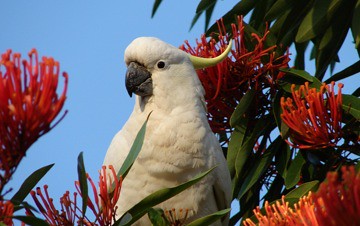
4 POINTS
• Cacatua galerita has a FLIGHT of 2.
• Cacatua galerita produces a very fine powder to waterproof itself.
Warm
Graphic by Joel Carlsonzazzle.com/joeyartist
Photo by Tatiana Geruswww.flickr.com/people/62938898@N00
The Sulphur-crested Cockatoo, Cacatua galerita, is a relatively large white cockatoo found in wooded habitats in Australia and New Guinea. They can be locally very numerous, leading to them sometimes being considered pests. They are well known in aviculture, although they can be demanding pets. In Australia, Sulphur-crested Cockatoos can be found widely in the north and east, ranging […] read more

Lesser Roadrunner
Geococcyx velox

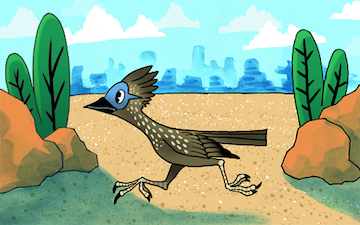
2 POINTS
• Geococcyx velox has a MOVE of 3
• Geococcyx velox can run at speeds of up to 20 miles per hour (32 km/h).
Warm, Hot
Graphic by Adam Smithrupted.deviantart.com/
Photo by Siegmund, Waltercommons.wikimedia.org/wiki/User:Wsiegmund
The Lesser Roadrunner, Geococcyx velox, is a large, long-legged member of the Cuckoo family, Cuculidae. The Lesser roadrunner resembles the Greater Roadrunner (Geococcyx californiana) in appearance and habit but is smaller and has a significantly shorter bill. Its breeding range is in southwestern Mexico, and north into the western side of the Sierra Madre Occidental […] read more

Eurasian Nuthatch
Sitta europaea

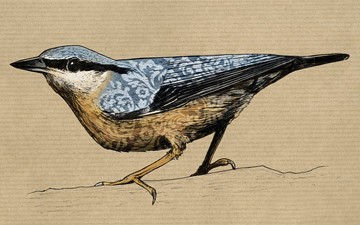
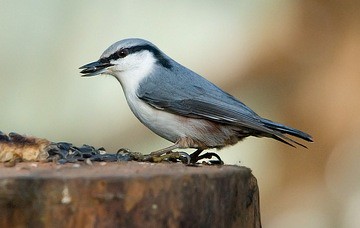
3 POINTS
• Sitta europaea has a FLIGHT of 2.
• Sitta europaea is the most common and most widespread nuthatch.
Cool, Warm
Graphic by Mark Sosbemarksosbe
Photo by Sergey Yeliseevwww.flickr.com/people/yeliseev/
The Eurasian Nuthatch, Sitta europaea, is a small passerine found throughout temperate Europe and Asia, although not in Ireland. It belongs to the nuthatch family Sittidae. This bird is the most common and most widespread nuthatch, and is often referred to just as the Nuthatch. It is a resident bird of deciduous woods and parkland, with some old trees for nesting. It feeds […] read more

Luzon Bleeding-heart
Gallicolumba luzonica

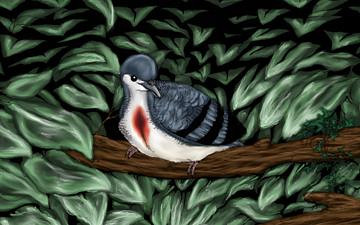
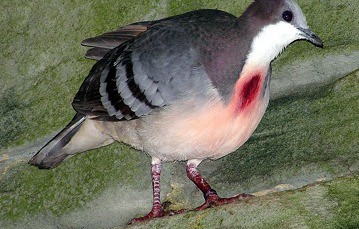
4 POINTS
• Gallicolumba luzonica has a FLIGHT of 2.
• Gallicolumba luzonica has a dark red patch on its breast that looks like a bleeding wound.
Warm, Hot
Graphic by Heather E. Harlowforbidding.deviantart.com/
Photo by Adrian Pingstonecommons.wikimedia.org/wiki/User:Arpingstone
The Luzon Bleeding-heart (Gallicolumba luzonica) is one of a number of species of ground dove in the genus Gallicolumba that are called “bleeding-hearts”. They get this name from a splash of vivid red colour at the centre of their white breasts. The Luzon Bleeding-heart is the species in which this feature is most pronounced, and on first sight […] read more

Rooster
Gallus gallus



3 POINTS
• Gallus gallus has a MOVE of 2.
• Roosters can and will crow at any time of the day.
Cool, Warm
Graphic by Scott Plasterscottplaster.com/
Photo by Fir0002/Flagstaffotoswww.flagstaffotos.com.au
A rooster, also known as a cockerel, or a cock[1] is a male chicken (Gallus gallus) with the female being called a hen. Immature male chickens of less than a year’s age are called cockerels. The oldest term is “cock,” from Old English coc. The term “rooster” originates from the United States,[2] while in the […] read more

Great Cormorant
Phalacrocorax carbo



5 POINTS
• Phalacrocorax carbo has a FLIGHT of 2.
• The name cormorant comes from the Latin ‘corvus marinus‘, which means ‘sea crow’
Cold, Cool, Warm, Hot
Graphic by Mark Sosbemarksosbe.deviantart.com/
Photo by JJ Harrisonen.wikipedia.org/wiki/User:JJ_Harrison
The Great Cormorant is a large black bird, but there is a wide variation in size in the species wide range. Weight is reported from 1.5 kg (3.3 lbs)[1] to 5.3 kg (11.7 lbs),[2] with a typical range from 2.6 to 3.7 kg (5.7-8.2 lbs).[3] Length can vary from 70 to 102 cm (28–40 in) […] read more